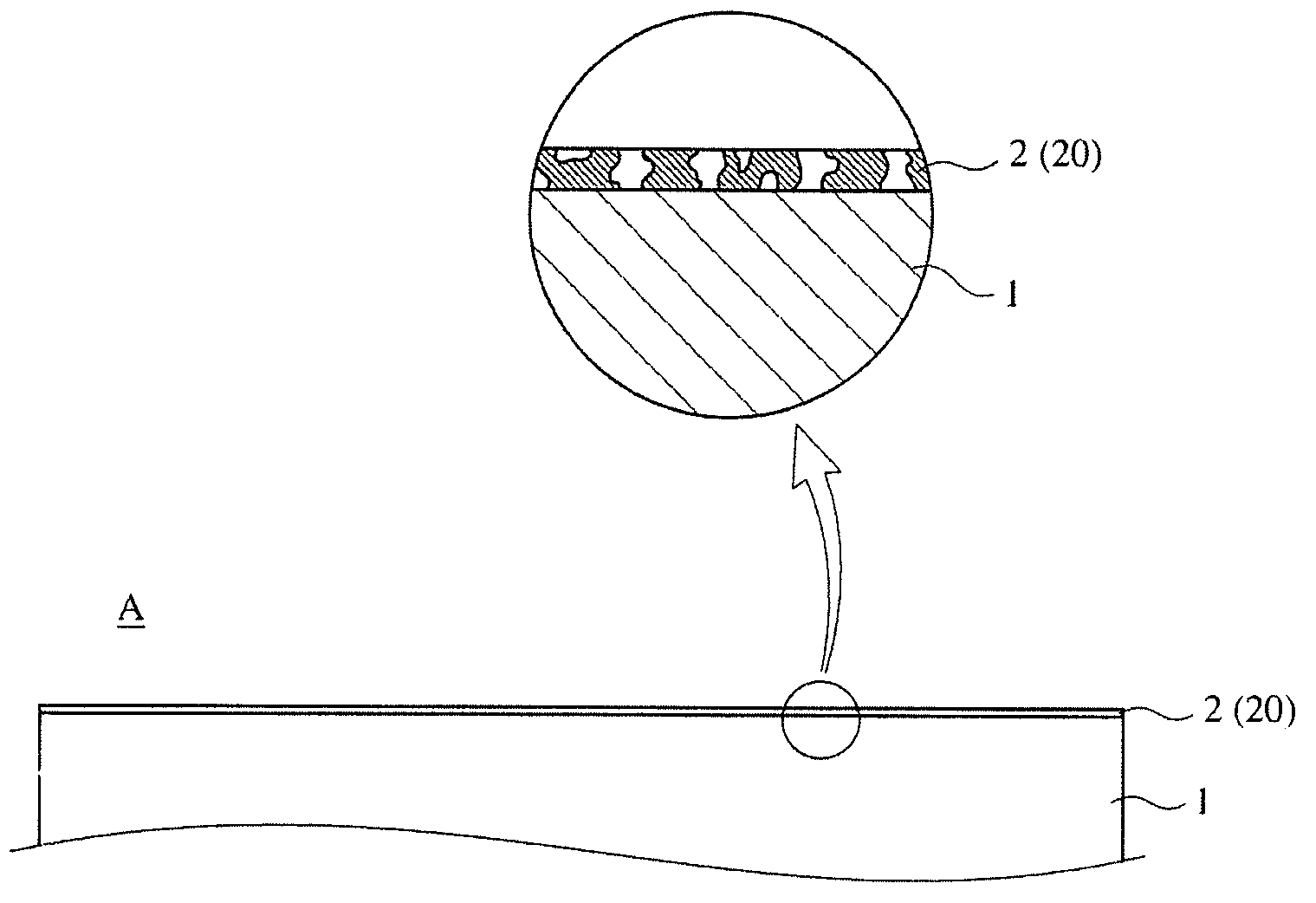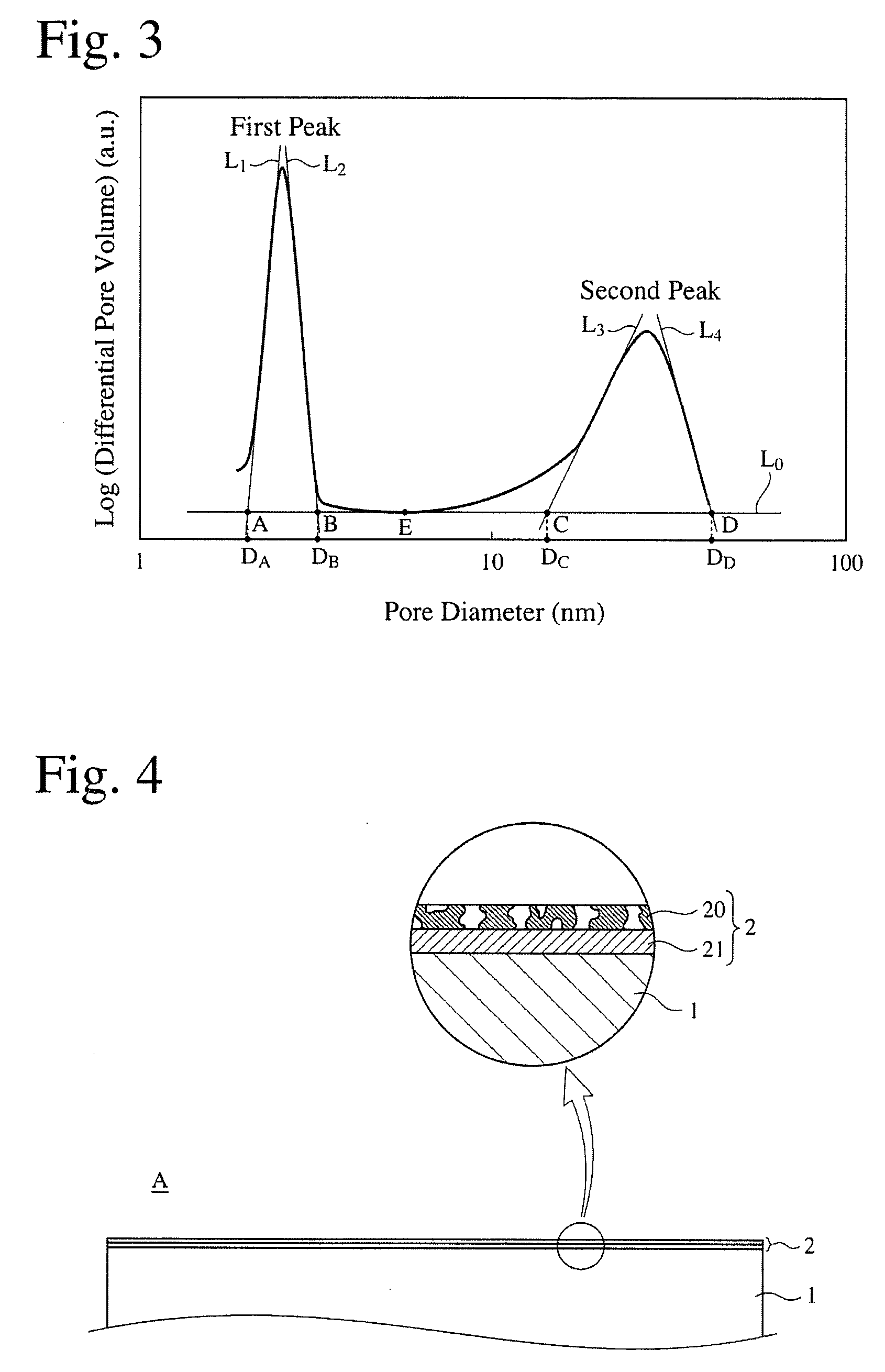Anti-reflection coating and its production method
- Summary
- Abstract
- Description
- Claims
- Application Information
AI Technical Summary
Benefits of technology
Problems solved by technology
Method used
Image
Examples
example 1
[0091]40 g of hydrochloric acid (0.01 N) having pH of 2 was mixed with 1.21 g (0.088 mol / L) of n-hexadecyltrimethyl ammonium chloride (available from Kanto Chemical Co. Ltd.), and 1.10 g (0.002 mol / L) of a block copolymer HO(C2H4O)106—(C3H6O)70—(C2H4O)106H (“Pluronic F127” available from Sigma-Aldrich), stirred at 23° C. for 1 hour, mixed with 4.00 g (0.45 mol / L) of tetraethoxysilane (available from Kanto Chemical Co. Ltd.), stirred at 23° C. for 3 hours, mixed with 3.94 g (1.51 mol / L) of a 28-%-by-mass ammonia water to adjust the pH to 11, and then stirred at 23° C. for 0.5 hours. The resultant solution of a surfactant-mesoporous silica nano-particles composite was spin-coated on a flat plate (diameter: 30 mm) of BK7 glass having a refractive index of 1.518, dried at 80° C. for 0.5 hours, and then baked at 600° C. for 3 hours. The characteristics of the resultant anti-reflection coating are shown in Table 1. Used in the measurement of a refractive index and a physical thickness was...
example 2
[0092]A mesoporous silica coating was formed in the same manner as in Example 1, except for using a flat plate (diameter: 30 mm) of LAK14 glass having a refractive index of 1.700 as a substrate. The characteristics of the resultant anti-reflection coating are shown in Table 1.
example 3
[0093]Using an electron beam vapor deposition apparatus, a silicon oxide layer (refractive index: 1.469) having a physical thickness of 95 nm (optical thickness: 130 nm) was formed on the above flat LAK14 glass plate (refractive index: 1.700) by vacuum vapor deposition. A solution of a surfactant-mesoporous silica nano-particles composite was prepared in the same manner as in Example 1 except for changing the amount of the above block copolymer to 3.22 g (0.006 mol / L). A mesoporous silica coating was formed on the above dense silicon oxide layer in the same manner as in Example 1 except for using this solution. The layer structure and characteristics of the resultant anti-reflection coating are shown in Table 1.
PUM
| Property | Measurement | Unit |
|---|---|---|
| Temperature | aaaaa | aaaaa |
| Diameter | aaaaa | aaaaa |
| Nanoscale particle size | aaaaa | aaaaa |
Abstract
Description
Claims
Application Information
 Login to View More
Login to View More - R&D
- Intellectual Property
- Life Sciences
- Materials
- Tech Scout
- Unparalleled Data Quality
- Higher Quality Content
- 60% Fewer Hallucinations
Browse by: Latest US Patents, China's latest patents, Technical Efficacy Thesaurus, Application Domain, Technology Topic, Popular Technical Reports.
© 2025 PatSnap. All rights reserved.Legal|Privacy policy|Modern Slavery Act Transparency Statement|Sitemap|About US| Contact US: help@patsnap.com



